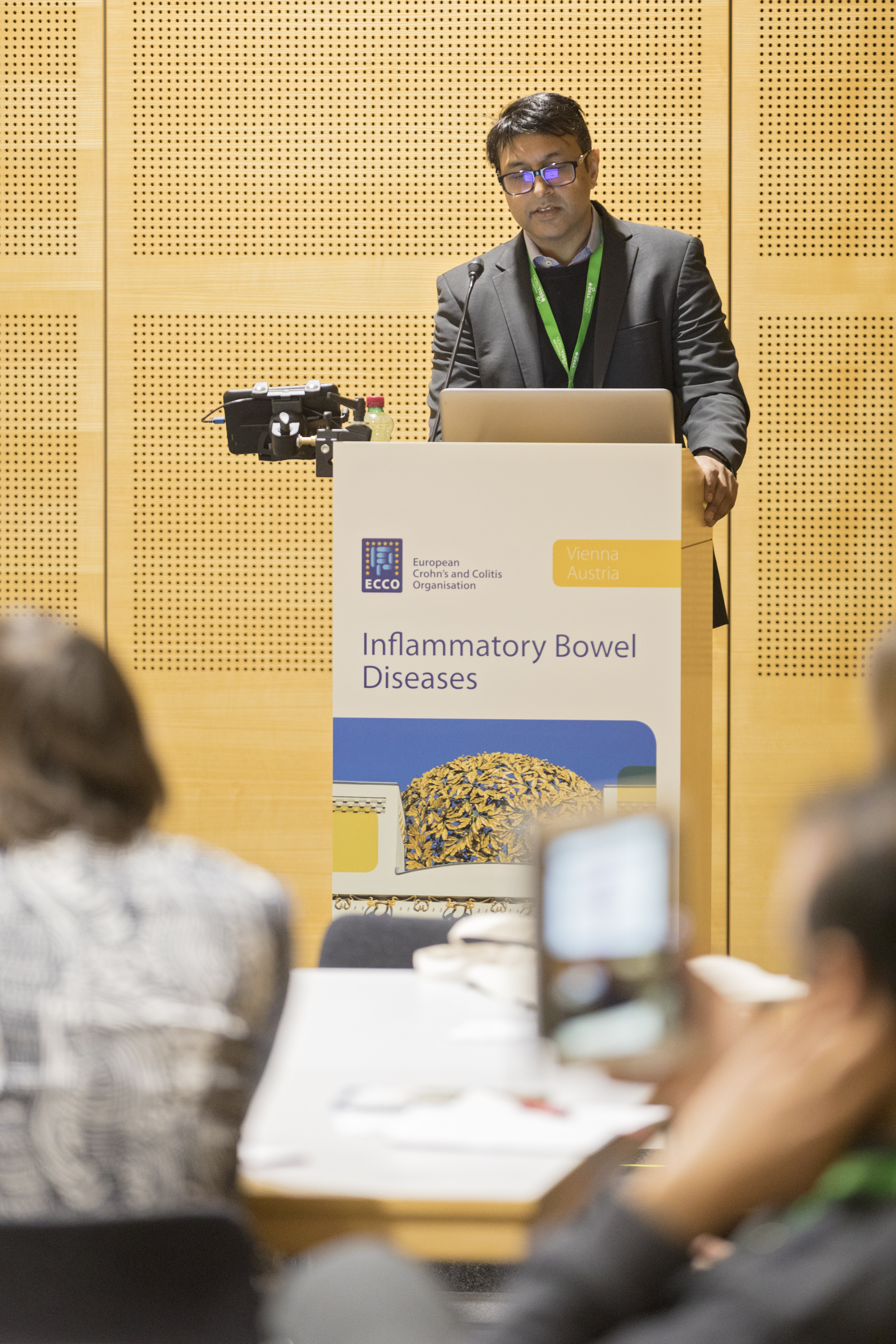Paediatric news from the 13th Congress of ECCO 2018
Jaroslaw Kierkus, P-ECCO Member
 Jaroslaw Kierkus © ECCO |
The 13th Congress of ECCO is behind us: So many thoughts, and important new targets for research into therapy, diagnosis and management. Everything in one place, in wonderful Vienna.
From the point of view of the paediatrician, the Congress offered insights into numerous new predictive tools. It is not surprising that research is heading in this direction, for ultimately “to know” is halfway towards “to treat”. Looking more closely at this topic: What can we predict and by what means can we predict it?
 5th P-ECCO Educational Course 5th P-ECCO Educational Course at ECCO'18, Vienna © ECCO |
A really interesting abstract was presented by Sarter, who showed that by using some genetic and serological markers in combination with clinical information at diagnosis we can identify those children with CD who have a high probability of requiring intestinal resection. Moreover, based on serological markers and single-nucleotide polymorphisms we can differentiate between children in whom disease behaviour will be adverse and those in whom it will be favourable. The former should be the target group for biologic therapy.
From Joosse we learned that patients with low TIGIT+ cells (below 25%) have shorter remissions. This needs to be borne in mind when planning long-term therapy in these children.
It was not only predictive factors in the setting of CD that were discussed. Orlanski-Meyer gave us a detailed insight into the prediction of outcomes in children with UC. She and her team screened 10,767 studies, of which 60 were analysed in depth. You can learn more about the results in our abstract book or by contacting the team. The Porto IBD group of ESPGHAN provided more data about children diagnosed with Acute Severe Colitis (ASC). Unfortunately, they found that 27%–34% of the studied patients had undergone a colectomy at 1, 3 or 5 years after admission for ASC.
“Treat to target” we say. But what is the target? D’Arcangelo has clearly shown us that in UC the target is mucosal healing. To evaluate mucosal healing, endoscopy is required. In adults this is not a problem, but in children endoscopic procedures are burdened with not only higher adverse event and hospitalisation rates but also a poor quality of life (QoL), as pointed out by Kim. Kotkowicz-Szczur went further, highlighting that QoL impacts may extend to the relationship between the parents. Therefore, more non-invasive markers have been developed to assess mucosal healing and the state of the mucosa. One of these is faecal calprotectin. At this year’s Congress I had the great pleasure of reading several posters that addressed the monitoring of mucosal healing by means of non-invasive markers. One might ask: Mucosal, why not transmural healing? This issue is still open, but I am looking forward to more precise answers about the role of magnetic resonance enterography in children with IBD from Turner’s and Kang’s teams.
 5th P-ECCO Educational Course 5th P-ECCO Educational Course at ECCO'18, Vienna © ECCO |
More prognostic factors, more probability and more… biologics. Should monitoring of biologic therapy be the same in children as in adults? Are trough levels the same? What about outcomes? More information was presented on these issues in two abstracts from van Hoeve from Leuven and a really interesting poster from Cavazza. Moreover, higher trough levels are associated with healing of fistulising disease, as El-Matary showed.
But it was not only biologics that were high on the list of interests at the Congress. Several abstracts were presented on new therapies, such as adsorptive leucocytapheresis and “antibiotic cocktails”, and new insights were provided into treatment with cyclosporine A and azathioprine.
As I have already mentioned, “to know” is halfway towards “to treat”, but if one knows the mechanisms and pathogenesis of the disease then one is perhaps three-quarters of the way towards that goal. Many thanks to Armstrong, Van Acker and Fabian for new insights in this field.
In summary I can say that prediction and probabilistic analysis is a tough nut to crack, but it leads to knowledge highly relevant to treatment. At this year’s ECCO Congress, we faced this challenge and achieved very significant progress! It is hard to encapsulate the entire range of paediatrician IBD knowledge from the ECCO Congress within just a few words, and I would refer all who are interested in the field to our Congress Website, where they can learn much more.


